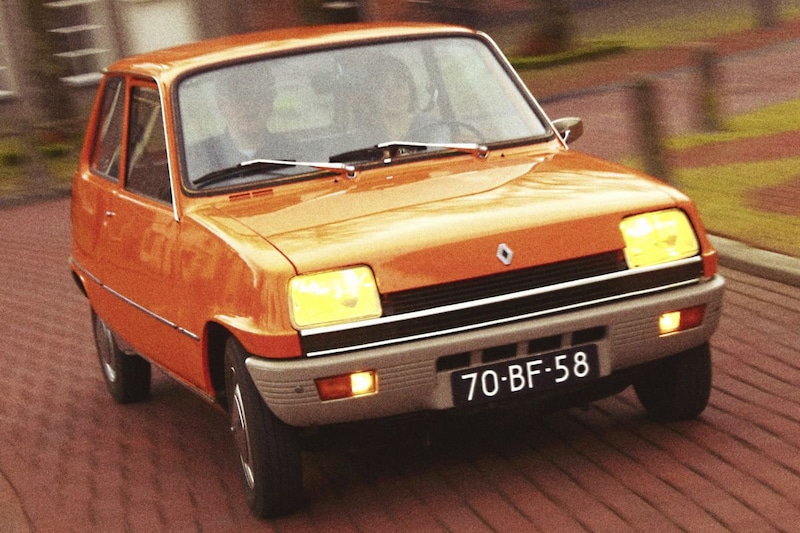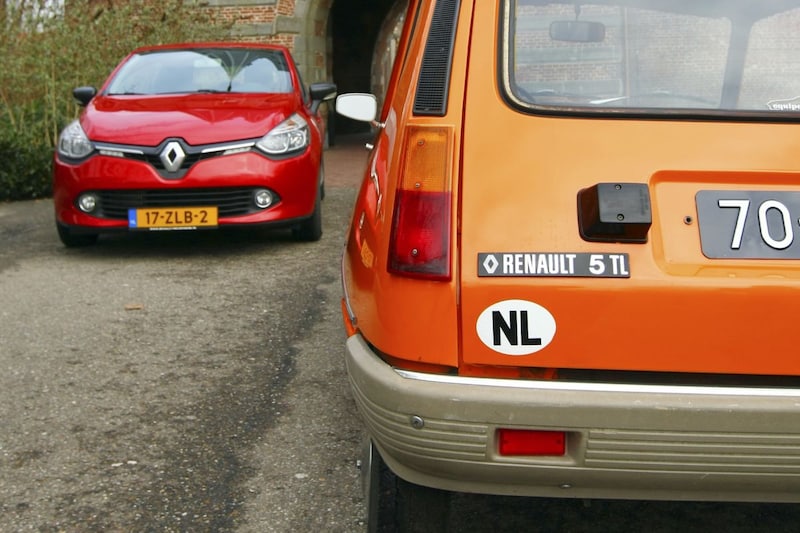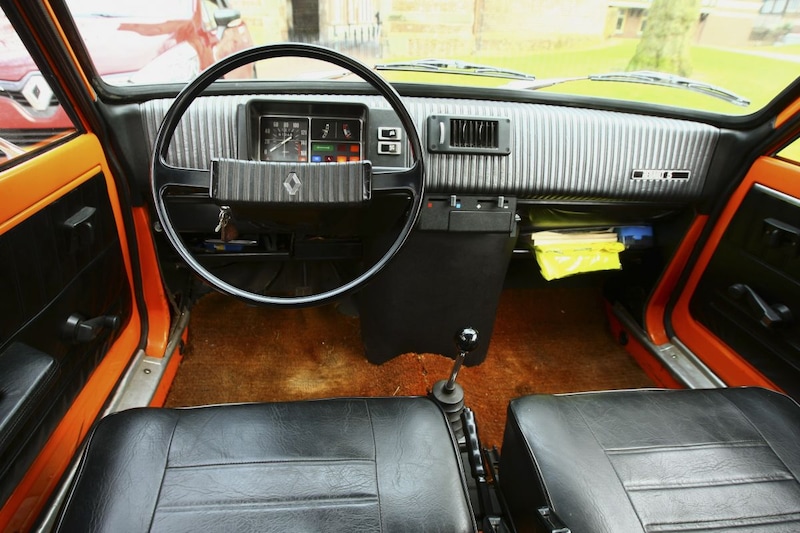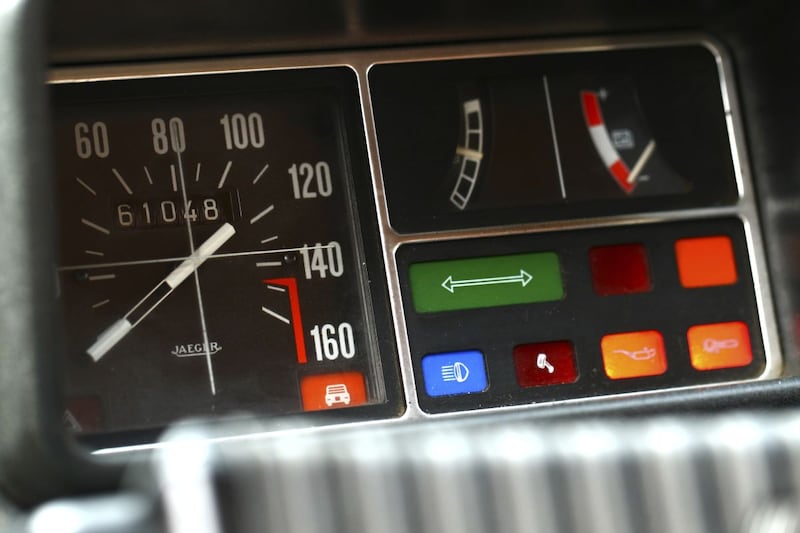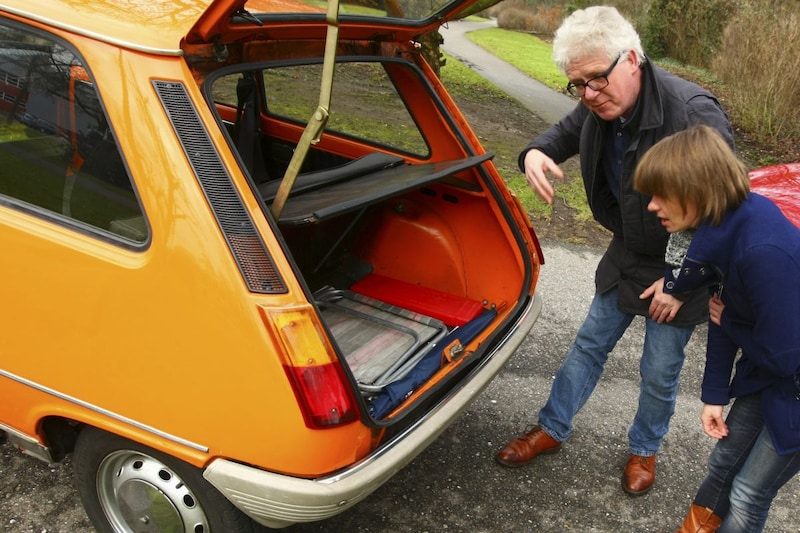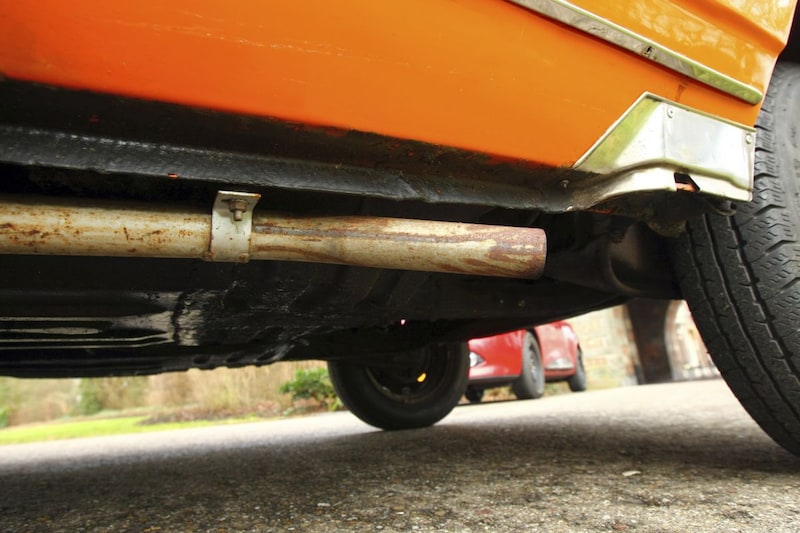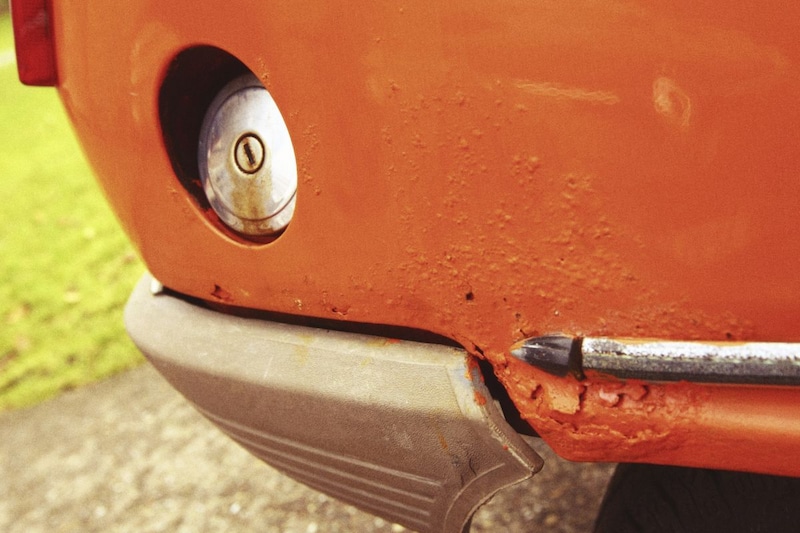Today it is exactly 50 years ago that Renault presented the 5. A car that became an icon of its time and that pleased millions of people. One longer than the other. So it’s high time to reminisce about a special meeting from 2014 with a primeval R5.
A quiet Sunday morning in Kampen. Behind a quaint garage door stands what was once a modern car to me; the tiny Frenchman who marked a revolutionary step for the calm Vier brand in 1972. The first Renault 5 spoke with its angular appearance, softened by its characteristically rounded plastic bumpers, the language of a new era.
At first glance, to my young guest star, it’s nothing less than a historical curiosity, a vintage car that had been driving for eight years when she was born. Maaike Blok, a doctor in Rotterdam, has a Clio with which she makes home visits in the region. It is a five-door 0.9 TCe with full-screen navigation, start-stop system and a modern three-cylinder turbo, painted in the spectacular introduction color rouge flamme. Then it is no small transition to come face to face for the first time with the earliest 5, bald as a bedbug, apparent dwarf next to the exuberant lifestyle Clio of the Dutch Renault design chief Laurens van den Acker.

Friendly undersized
Yet at first sight she says “Wow!” And rightly so, because the ancestor of her red is priceless fun. “But God, how small he is!” Say that: 3.52 meters long, 1.52 wide, 1.41 high; the latest Clio is a giant with its 4.06 meters by 1.73 meters. Its friendly undersized gives the Fiver something endearing, especially in one of the coolest cult colors of its time: bright orange.
Owner Jan Ploeg, a Renault enthusiast from home, tells how he found it, just in the Netherlands. He and his wife Anne wanted a real one, in yellow or orange. “We saw the ad and immediately went to look. The garage opened and there he was.” Bingo, for next to nothing. The condition was not that bad, it was not necessary to restore. For example, since 1997 Jans 5 TL – a luxury version with rear window heating – has been part of the small Renault collection in which the humble models rule. In addition to the Five, he also owns an R6, a Twingo and a touchingly modest 1964 Renault Dauphine, the sedan in which the Ploeg couple got married.
Make no mistake about the Fiver, this is not a toy. Behind that disarming little face is a masterfully thought out car. Designer Michel Boué drew a mini in which every usable square millimeter benefits the occupants.
For a car of just over three and a half meters, it is unimaginably spacious. The dashboard runs under the windscreen like a padded skai beam with the intention of taking up as little space as possible. Everything on it has been designed to be as compact as possible. The instruments sit on a kind of balcony behind the two-spoke steering wheel with the same vertical lines as the dashboard. In the rectangular meter unit, under a hood, there are speed and fuel meters as well as some indicator lights; In addition, toggle switches are located for the blower, windscreen wipers and, yes, the rear window heating. To the left of the wheelhouse you will find two stems; for the lighting and the clignoteurs. A real center console is missing. On a separate panel under the ventilation grille – just one! – there are two sliders for hot and cold and plus and minus.
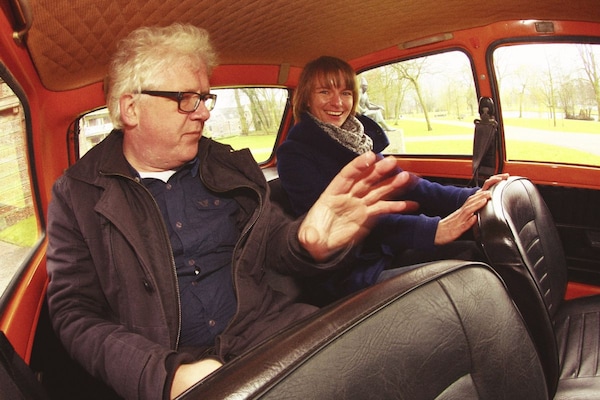
The front seats are indeed thin, but quite acceptable for normal bodies. Since they can fold forward in their entirety, boarding is a breeze for rear passengers. Once installed, they don’t sit like pegs in a barrel. The head space is still more than adequate for the average 21st-century person, a lot taller than the average citizen of the 1970s. You only lose the bearable legroom there if there is something huge in front of you, like our photographer Jacco van de Kuilen.
Ergonomic genius
Surprise, surprise: for Maaike, who with her 1.60 meters remains close to the average Parisienne in 1974, this is without any reservation a spacious car. “This is absolutely no tighter than my Clio”, she concludes with surprise. And we’re not there yet. Behind the rear seats is a luggage compartment with a volume of 270 liters, but thirty less than that of her Clio, while it is still half a meter longer.
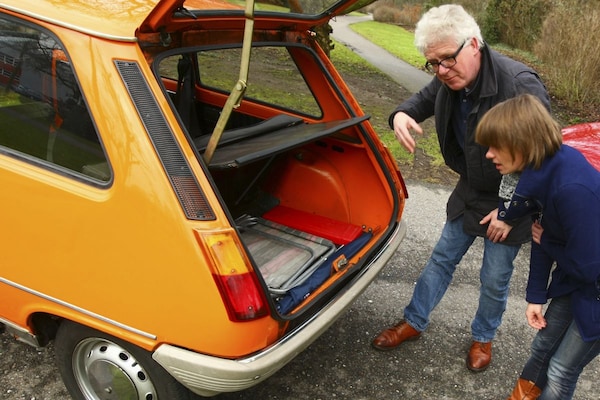
You pay a price for that happiness. In order to keep the car as affordable as possible, Renault supplied your Five with a little bit of airframe. Not a cent more was spent on the furnishings than was strictly necessary. You can tell by the bare window frames and doors, with spartan painted steel that today’s pampered consumer would look down on. It wasn’t austerity rage, it was ergonomic genius. Nothing about this design is beyond motivation. The signature shield bumpers of the first Five are ideal for a city car; the material can take a beating and it can also be replaced in no time. Together with the Citroën 2CV and the later Peugeot 205, the Five is, in short, one of the most brilliantly conceived small French cars. Renault, who built it from Iran to Venezuela and also marketed a sedan version under the name ‘7’, had a great hit with it. The company sold more than seven million copies of the Five and its successor, the 1985 Supercinq.
With the eye of the diagnostician, Maaike inspects the engine compartment, so efficiently arranged that Renault even managed to find room for the spare wheel. She protests politely when I try to close the hood. “Let me have another look. That must be the battery, and that over there, is that the timing belt?” Bien sur, madame. ah. Note, I say, that there is still plenty of room under the hood for larger engines that would give hotter versions of the dot a Jekyll & Hyde-esque aftertaste. The 1,397 cc four-cylinder of the 5 Alpine and the first turbo engine with the same capacity made the Five one of the earliest hot hatches in the company years of the first Golf GTI.
You shouldn’t drive it into a tree. But suppose you don’t?
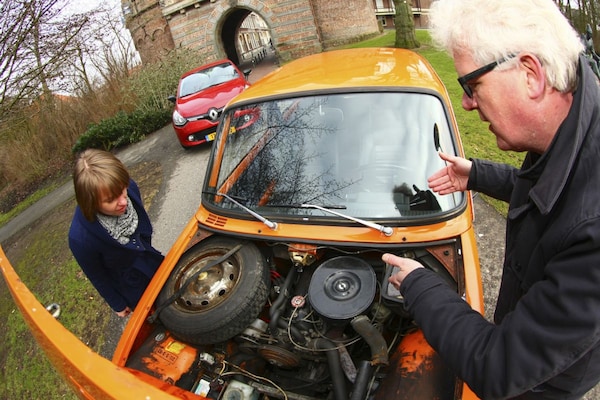
Even then, every Five debut comes as a shock to today’s thirty-somethings. The long stroke of the clutch pedal and the resistance in the unassisted steering put Maaike off her feet for a moment. Once again, a young motorist is left in the dark about how the choke pull knob that carburetor engines still had in those days. “But when should I push it back?” Well, you must feel that – explain that to children of the injection era. Braking is scary if you think that it goes like it goes in a Clio; step and stop. The Five slows down well, but gradually, so anticipation is needed. Once it rolls, you will no longer have any use for the Vijfje, which in the cramped city center of Kampen with its many crawl-through alleys still appears after almost fifty years to be that handy city car that it should have belonged to Mr Renault.
After the first awkwardly wide turns, Maaike steers him across the canals as if she had never done anything else. Even operating the vaguely shifting four-speed gearbox does not appear to be a power sport. “It is very easy to drive”, she concludes, “it just takes a little harder work. It is reminiscent of sailing, it takes a little power. But I’m used to it. My first car was a Ford Fiesta that also steered quite heavily. And the stove is working, I feel.” This is not an unnecessary luxury on a Five with one or more passengers on board. The windows quickly fog up on cold days with too many people on the floor. The simple ventilation system simply cannot handle the moisture. Then the demisting mode offers a solution, which just barely manages the moisture balance. But then you have to be able to withstand all the noise it joyfully produces. Unfortunately, the weeder may drown out the most charming side of the Five; its engine noise. It sounds like a Renault, with the sound that Maaike’s generation has not received. Friendly and also very humble; the sound of a butler. “Listen,” I hear myself say, “that’s what the Renaults of our youth sounded like.” The owner of the business-neutral sounding three-cylinder downsize turbo takes what I say with a smile. Engine noise, another word from the past, just like floor poker.
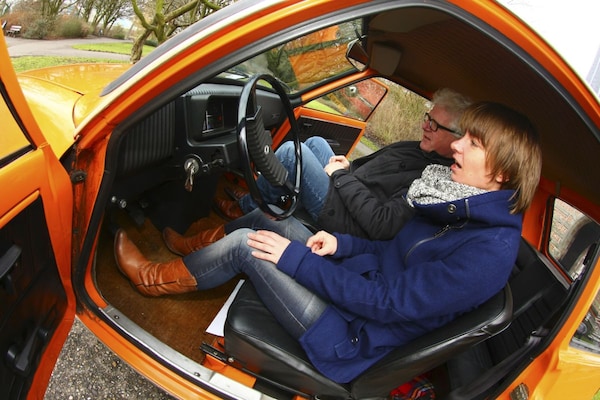
Sadistic assignment
When I ask Maaike about the disadvantages of her Clio, she can’t really think of anything, unless it was the navigation, which she doesn’t always think responds adequately. “Okay”, I say on a Kampense canal, “just park that Fiver in.” It’s an almost sadistic assignment with those unpowered controls. “Pooh, if I still have muscles”, sighs Maaike. But it’s going very well, he stands up straight. Good. By the way, did she notice anything? “Ah, now that you mention it. The overview is great. You see everything. In my Clio that is less, is true. I don’t mind that by the way. I put it down easily, and if the going gets tough, I have parking sensors.” Afterwards we step back into Maaike’s quiet, spacious, modern Clio. “This is incredibly easy to drive,” she says with a sigh of relief, which now also includes admiration for the progress. The perfection of her Clio is from today in a historical perspective.
This article originally appeared in AutoWeek 28 from 2014.
– Thanks for information from Autoweek.nl
